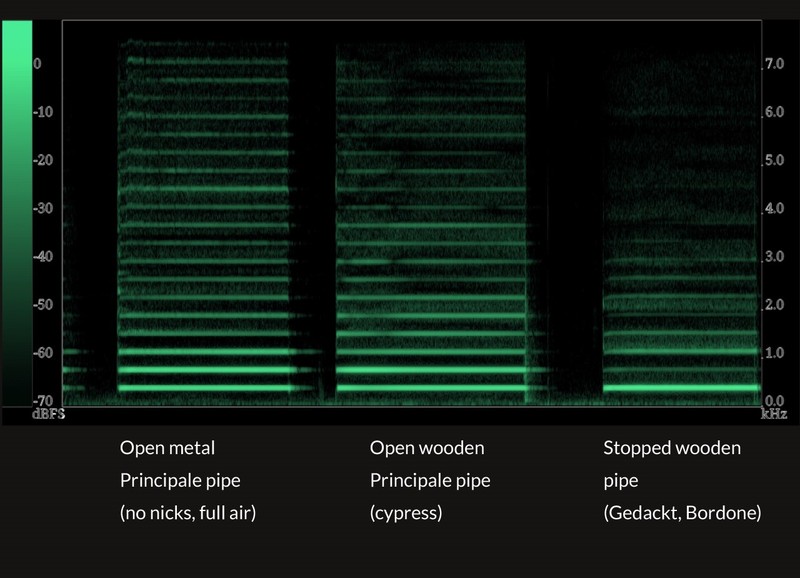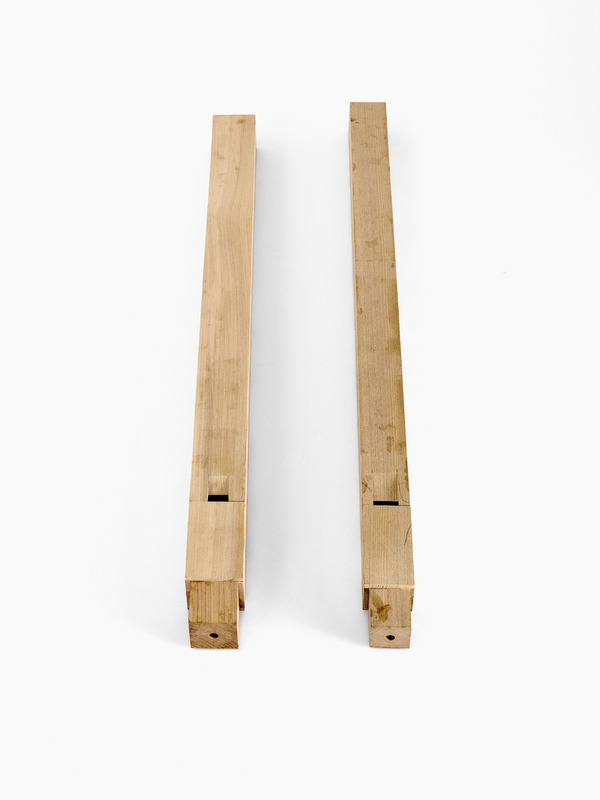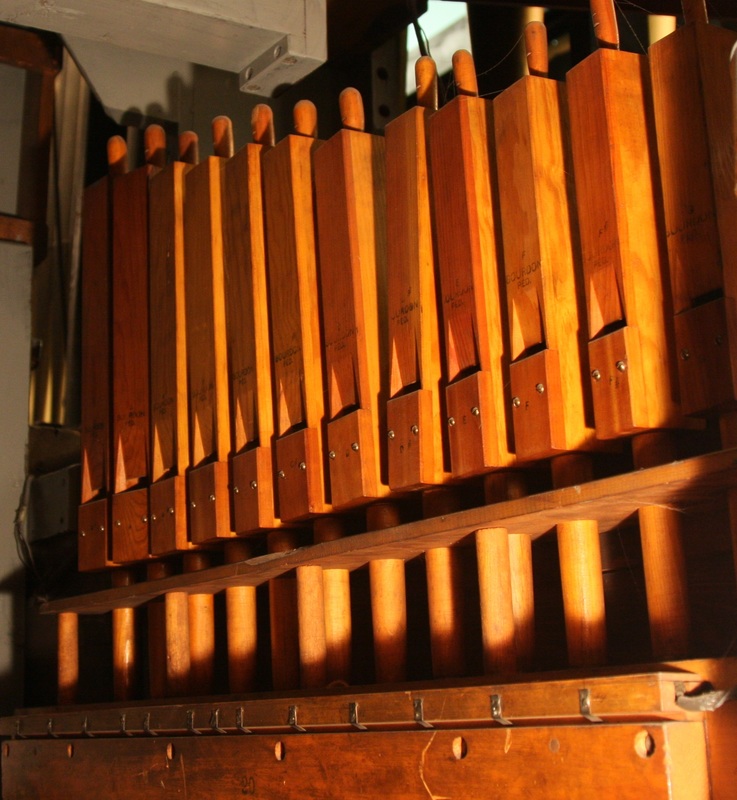Types of Wooden Pipes
The main rank(s) of pipes of the organo di legno normally consisted of principal organ pipes, meaning that they were open at both ends, relatively narrow in scale, and with a low, wide mouth (the opening near the base of the pipe that cuts the airflow). However, beyond the organo di legno, wooden principal pipes are not particularly common in the history of organ building. In those unusual cases today in which wooden pipes do serve as principals, the stop name will normally signal the material divergence from the metal norm, as in “Oak Principal,” “Wood Principal,” or “Open Wood,” underscoring that difference.
In organs past and present, wood commonly serves as the material for two broad types of pipe that are both quite different, in sound and construction, from the principal. The first, and by far more common of these is the stopped pipe or gedackt. The gedackt is obstructed at the top end with a wooden stopper or metal flap, which effectively doubles (or nearly doubles) the resonating length of the pipe. As a result, a gedackt is approximately half the length of an open pipe producing the same pitch (thus, the lowest pipe in a 16-foot gedackt rank is about 8 feet in length). In scale, a gedackt can vary from narrow to wide.
The sound of the stopped pipe is very different from an (open) principal pipe. As the image shows, the even-numbered partials of the stopped pipe are eliminated, and most of the odd-numbered partials are considerably weaker as well. Its fundamental tone, on the other hand, is slightly louder than that of the principal. This timbral spectrum affords the gedackt its ghost-like quality. As mentioned in the previous section, this timbre was not typically present in the organi di legno used in Italy throughout the sixteenth, seventeenth, and eighteenth centuries.
A second category of wooden pipe found in a wide variety of organ building traditions is the wide-scale open flute. The overtone spectrum of an open flute falls between those of the principal and the gedackt, with a powerful fundamental tone and muted overtones. Unlike the gedackt, this type of pipe normally figured in Italian organs, of both the metal and wooden variety.
In the rare cases in which modern organ builders have constructed wooden principals, the pipes tend to be deliberately voiced in such a way that their tone bears more resemblance to that of the gedackt and open flute than to that of a metal principal. As an example, we can compare three different pedal ranks of the Rosales organ at First Presbyterian Church in Oakland, California. The Bourdon 16’ is a gedackt, the Prestant 16’ is a metal principal. The Open Wood 16’ falls somewhere between the two, but is more similar to the stopped Bourdon than to the Prestant.
Thanks to First Presbyterian Church of Oakland for allowing access to the organ.
Citation: Leon Chisholm, ‘The organo di legno’s timbral timber’, in: Materiality of Musical Instruments. A Virtual Exhibition.



